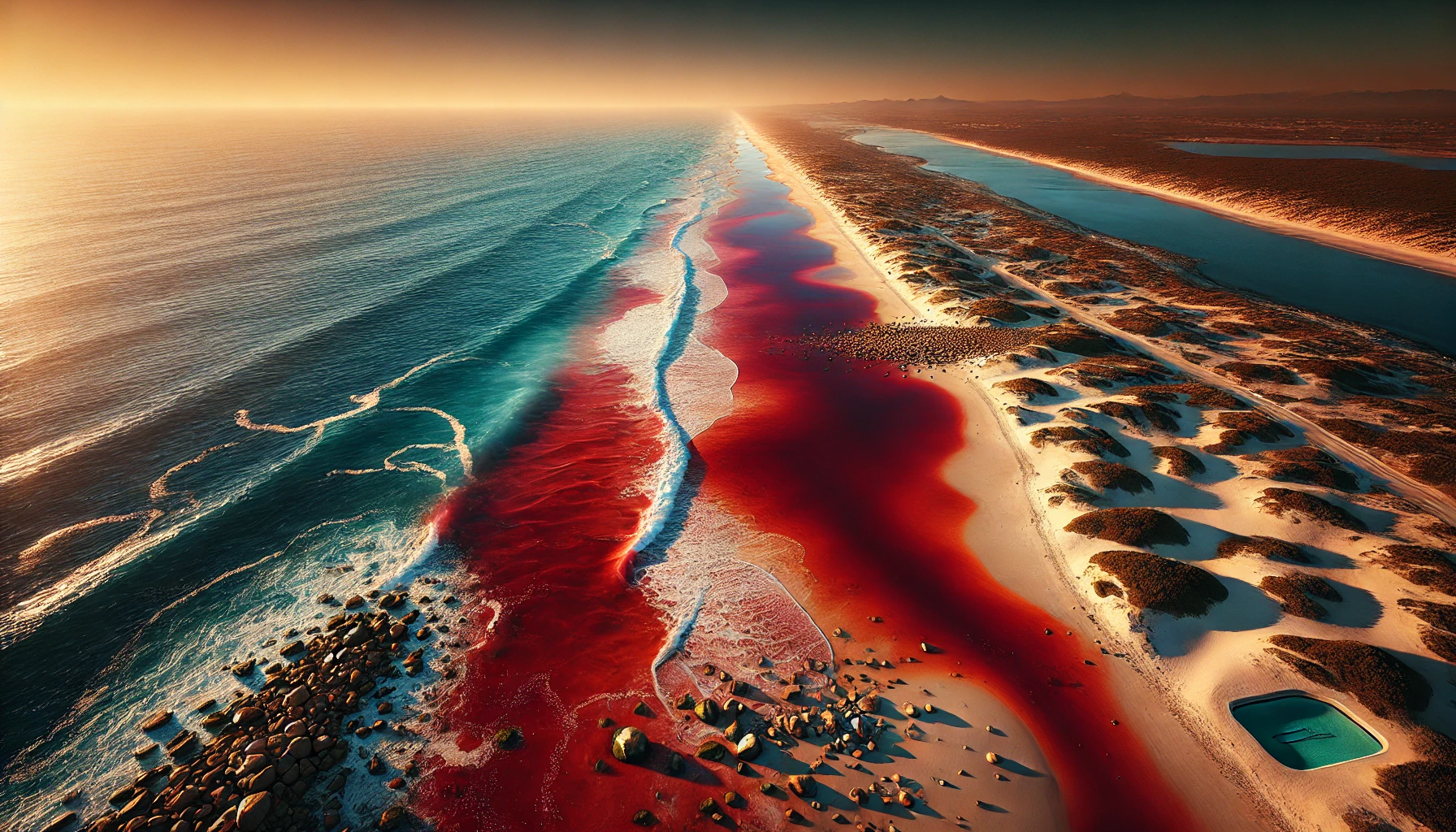Red tides are one of the ocean’s most striking yet concerning natural phenomena. Characterized by the discoloration of water due to algal blooms, these events can have significant ecological, economic, and health impacts. Here’s everything you need to know about red tides.
What Are Red Tides?
Red tides occur when certain types of algae grow rapidly, often turning the water a reddish or brownish color. These algal blooms are typically caused by a combination of warm water temperatures, nutrient-rich waters, and specific weather conditions.
How Do Red Tides Form?
- Algal Blooms: Red tides are primarily caused by dinoflagellates and other microscopic algae that multiply quickly under favorable conditions.
- Nutrient Input: Runoff from agriculture, wastewater, and urban areas can introduce excess nutrients like nitrogen and phosphorus into coastal waters.
- Environmental Triggers: Warm temperatures, sunlight, and calm seas create ideal conditions for algal growth.
Famous Locations for Red Tides
- Florida Gulf Coast, USA
- Known for recurring red tides caused by Karenia brevis algae.
- Hong Kong Waters
- Experiences red tides linked to urban runoff and high water temperatures.
- Chilean Coast
- Affected by algal blooms that impact its aquaculture industry.
- Arabian Sea
- Frequent red tides due to monsoon-driven nutrient influx.
Why Are Red Tides Important?
- Marine Life Impact: Toxins produced by algae can harm fish, marine mammals, and seabirds.
- Human Health: Consuming shellfish from red tide areas can lead to poisoning.
- Economic Consequences: Fishing, tourism, and aquaculture industries often suffer significant losses.
How to Stay Safe During a Red Tide
- Avoid Water Contact: Red tide toxins can cause skin irritation and respiratory issues.
- Check Seafood Safety: Only consume seafood certified as safe during red tide events.
- Monitor Local Alerts: Stay updated on water quality reports and health advisories.
Can Red Tides Be Prevented?
Reducing nutrient pollution is key to minimizing the frequency and severity of red tides. This includes implementing sustainable agricultural practices, improving wastewater treatment, and protecting natural wetlands that filter runoff.
Capturing the Beauty and Concern of Red Tides
- Use a Drone: Aerial shots can highlight the striking contrast of red-tinted waters.
- Night Photography: Some red tides exhibit bioluminescence, creating a glowing effect in the dark.
- Document Responsibly: Focus on the phenomenon without disrupting the environment.
Red tides are a complex and fascinating natural occurrence that demands both awe and caution. While they showcase the power and intricacy of marine ecosystems, their potential impacts on health and the environment remind us of the importance of sustainable practices.
Check this Quiz about Global Warming.

